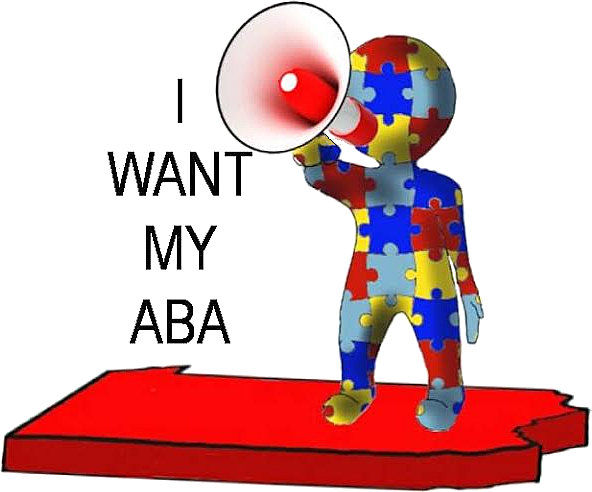
Unlocking Behavior Change: The Power of Applied Behavior Analysis
Applied Behavior Analysis (ABA) therapy holds immense power in unlocking behavior change. By employing a systematic approach rooted in scientific principles, ABA offers a path towards understanding and modifying behavior patterns in individuals. With its effectiveness spanning across a spectrum of age groups and domains, from children with autism to individuals struggling with addiction, ABA therapy has emerged as a game-changer in the field of behavior modification. By delving into the intricacies of Applied Behavior Analysis, we can uncover its potential to transform lives and pave the way for positive and lasting change.
The Basics of Applied Behavior Analysis
Applied Behavior Analysis (ABA) is a therapeutic approach that focuses on understanding and modifying behavior. ABA therapy aims to increase socially significant behaviors while decreasing problem behaviors. It is a data-driven and evidence-based methodology that has proven effective for individuals with various developmental disorders and behavioral challenges.
At its core, ABA therapy involves breaking down behaviors into smaller, observable components. This allows therapists to analyze the antecedents (what happens before the behavior), the behavior itself, and the consequences (what happens after the behavior). By carefully studying these factors, ABA practitioners can identify patterns, triggers, and maintaining factors of specific behaviors.
To promote behavior change, ABA therapy utilizes various techniques and strategies. These may include positive reinforcement, where desired behaviors are rewarded to increase their occurrence. Additionally, negative reinforcement, punishment, and extinction techniques can be used to reduce problem behaviors. ABA therapy also focuses on teaching new skills, such as communication, social interactions, self-help abilities, and academic tasks, to enhance one’s overall functioning.
One of the key strengths of ABA therapy lies in its individualized approach. ABA practitioners conduct assessments and gather baseline data to develop tailored intervention plans. These plans are specific to the needs, abilities, and goals of each person they work with. By regularly monitoring and adjusting the interventions based on data-driven results, ABA therapy maximizes its effectiveness in promoting behavior change.
Overall, Applied Behavior Analysis is a powerful tool in promoting behavior change for individuals with developmental disorders and behavioral challenges. By breaking down behaviors, identifying triggers and patterns, and implementing targeted interventions, ABA therapy aims to improve the quality of life for individuals and empower them to lead more fulfilling and independent lives.
The Benefits of ABA Therapy
ABA therapy, also known as Applied Behavior Analysis, is a highly effective approach that brings about significant improvements in individuals’ behaviors and overall quality of life. This therapy has been widely recognized and embraced for its remarkable benefits, offering tangible outcomes for individuals of various ages and diverse needs.
Improved Learning Abilities: Through ABA therapy, individuals gain enhanced learning abilities by breaking down complex tasks into smaller, more manageable steps. This structured approach promotes a systematic learning process, allowing individuals to grasp new skills and knowledge with increased confidence and understanding. By focusing on positive reinforcement and repetition, ABA therapy empowers individuals to acquire essential life skills, academic abilities, and social interactions that support their educational and personal growth.
Enhancing Social Skills: ABA therapy provides invaluable support for individuals with social communication challenges. By utilizing evidence-based techniques, this therapy cultivates social awareness, empathy, and appropriate communication skills. Encouraging positive social interactions and fostering meaningful relationships, ABA therapy equips individuals with the necessary tools to navigate social environments successfully. As a result, individuals become more confident, better able to engage in conversations, and develop long-lasting friendships.
Promoting Independence and Functional Living: ABA therapy focuses on teaching individuals vital life skills that promote independence and functional living. By breaking down daily activities, such as personal hygiene, meal preparation, and household chores into manageable steps, ABA therapy assists individuals in becoming more self-reliant. This empowers them to take charge of their lives and participate actively in various environments such as school, work, and community settings. Ultimately, this therapy helps individuals reach their full potential and lead fulfilling and autonomous lives.
In conclusion, ABA therapy, or Applied Behavior Analysis, offers a multitude of benefits to individuals across a wide spectrum of needs. By improving learning abilities, enhancing social skills, and promoting independence, this therapy plays a pivotal role in unlocking behavior change and facilitating the growth and development of individuals in meaningful ways.
Implementing ABA Techniques for Lasting Behavior Change
Applied Behavior Analysis (ABA) therapy is a powerful approach that can lead to significant and lasting behavior change. Through the use of evidence-based techniques, ABA therapists work with individuals to identify and modify behaviors that may be causing challenges in their daily lives. By utilizing a systematic and data-driven approach, ABA therapy aims to bring about positive and meaningful outcomes.
Central to the effectiveness of ABA therapy is the careful implementation of behavior change techniques. These techniques are tailored to the specific needs and goals of each individual, ensuring that interventions are both targeted and effective. ABA therapists employ a range of strategies, such as positive reinforcement, prompting, and shaping, to teach new skills and reduce problematic behaviors.
Positive reinforcement plays a vital role in ABA therapy, as it involves providing rewards or incentives to increase the likelihood that desired behaviors will occur. By identifying and utilizing individuals’ preferred rewards, whether it be verbal praise, tokens, or access to preferred activities, ABA therapists create a motivating environment that encourages positive behavior change.
Prompting is another technique used in ABA therapy that involves providing individuals with cues or assistance to help them perform desired behaviors. By gradually fading prompts over time, individuals become more independent in their actions and are able to demonstrate the desired behaviors with minimal assistance.
Learn More
Shaping is a technique that involves breaking down complex behaviors into smaller, achievable steps. ABA therapists guide individuals through each step, reinforcing successful approximations of the target behavior. Through shaping, individuals are able to acquire new skills and behaviors that may have previously seemed challenging or out of reach.
Implementing ABA techniques requires skilled and trained professionals who can effectively analyze behavior, design intervention plans, and measure progress. Continuous data collection and analysis are essential components of ABA therapy, allowing therapists to track progress, make informed decisions, and adapt interventions as needed.
In conclusion, ABA therapy offers a systematic and evidence-based approach to behavior change. By implementing ABA techniques such as positive reinforcement, prompting, and shaping, individuals can acquire new skills and modify problematic behaviors in a lasting and meaningful way. The expertise of ABA therapists in analyzing behavior and designing tailored interventions ensures the effectiveness of this approach in promoting positive outcomes for individuals of all ages and abilities.


